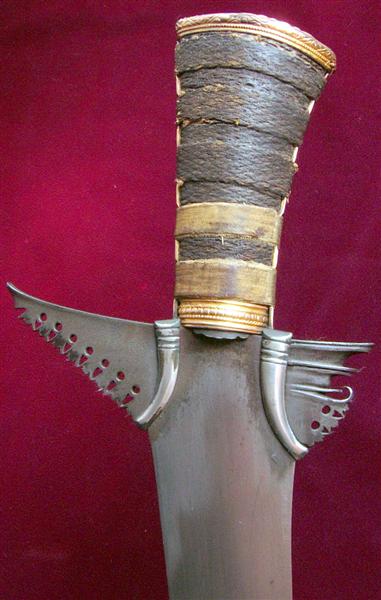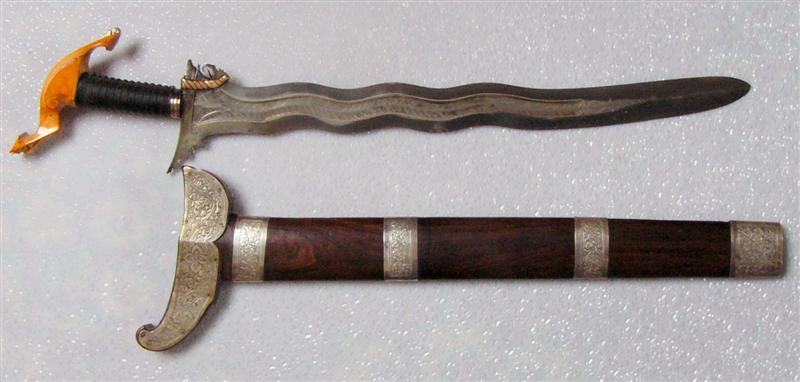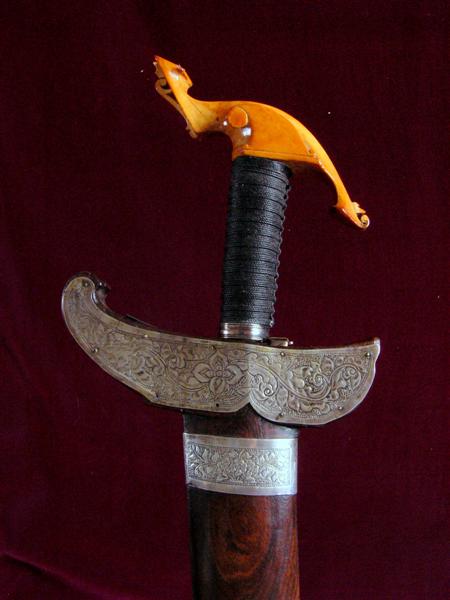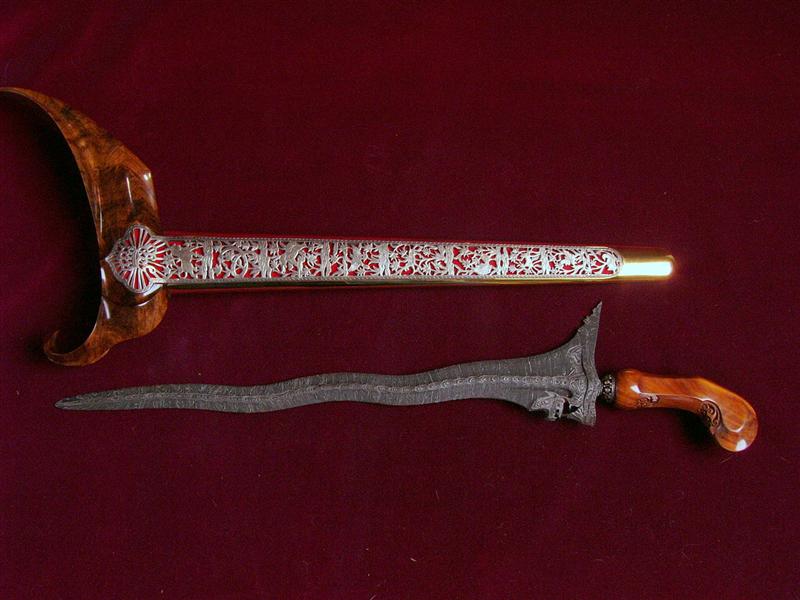Posts: 9
Sat 08 Mar, 2008 12:30 am
I'll try to answer as many questions as possible! Wow! Good responses.
First, a Moro kris, though sharing similar form with the Indonesian and peninsular examples, is a very different animal. The tang is rectangular in cross section so that the handle will not turn when used. Nor is it easily removable, being held on with a pitch that must be heated to be removed. Also the "ring" that you mention is called an asang-asang. Actually a clamp with a metal strip that you can't see going under the hilt binding. This additionally holds the blade to the hilt.
These were much bigger than Indonesian keris. Blades were at least 20" (or more) in length, and much more substantial.
Moro/Philippine Kris like this were battle weapons and powerful slicing swords as well as talismans.
The Indonesian keris were talismans first and weapons second. Though they could do serious damage with a thrust, the tang, or pesci, is comparatively weak as it was made so the handle could easily be removed and the keris cleaned in yearly ceremonies.
The pommel is a huge piece of ivory. Carved in a shape called a "Jungayyan." Some say this looks like a cockatu bird or kakaktua. The sword you see here was made for a person of high rank and/or social status. While it is razor sharp and laminated steel, like most older Moro weapons, it is more likely a ceremonial piece. The pommel would get in the way in battle.
I couldn't really comment on Lionsgate keris except to say this is from Sumatra and very different than the kris I have pictured.
It is likely that the PI kris (as opposed to the Indonesian "keris") actually began in Java. Migrated up through Borneo and over to the PI Islands.. I collect these also though I am more familiar with Java, Bali and Madura.
As far as actual use, I know little about techniques. The Moro were a south PI group located around the Sulu and Mindanao. Fighting was usually done by ambush in heavy brush. Some had boats and operated as pirates. All were ferocious fighters. It is believed that the explorer, Magellan, was killed by a Filipino warrior with a longsword called a kampilan.
The Spanish fought the Philippine warriors for nearly 400 years and never conquered them. You may be aware that the US Army side weapon was a .38 cal revolver until we met the Moro/Filipino fighters during the Spanish-American war. Our .38 cartridge proved ineffective in stopping these small fighters and we went to the 45 ACP.
Like the much smaller Indonesian keris there is much mysticism surrounding the PI kris. Many believe that there is a spirit or Djinn inhabiting the blades. The pieces certainly have presence.
If you look carefully you will see a piece of metal between the blade and the handle. In Indonesian terms this is called a "gangya." In PI mythology it is said that a spirit is invited into the blade, then the gangya is slid down over the tang. Kind of like the cork in a bottle.
I enclose two PI Kris that were more battle weapons. Note the difference in the pommels. The first has a substantial handle and two of the asang-asang clamps. It is a straight blade. Some were straight and some had waves. It was a personal choice. If a blade had waves, it always was an odd number because kris and keris were considered male.
The second kris has a danagan pommel that is more common to kris, however it is uncommon to find the fragile pieces of wood still intact. Most were broken off.
 Attachment: 25.09 KB
Attachment: 25.09 KB

 Attachment: 31.54 KB
Attachment: 31.54 KB

 Attachment: 41.92 KB
Attachment: 41.92 KB

 Attachment: 9.7 KB
Attachment: 9.7 KB









